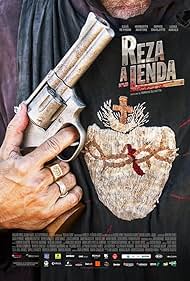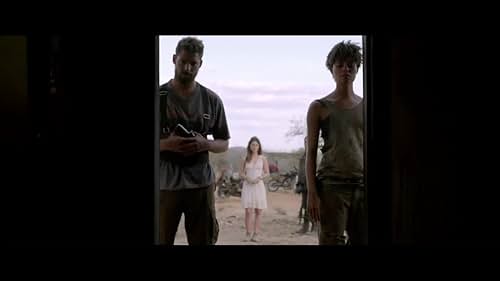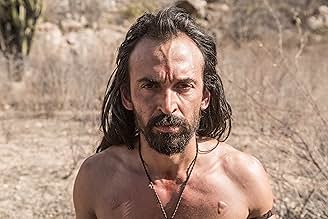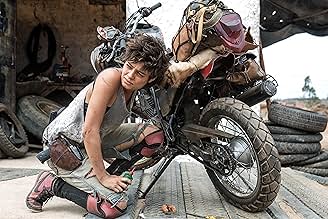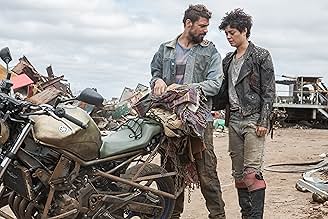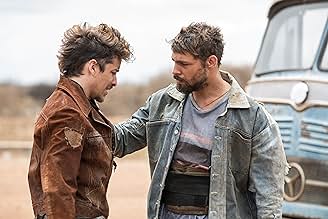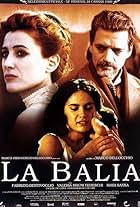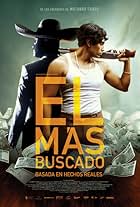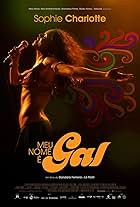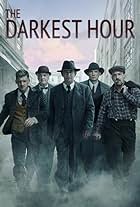In an arid and poor region of Brazil, bikers search for a miracle to make it rain and save the land, risking their lives.In an arid and poor region of Brazil, bikers search for a miracle to make it rain and save the land, risking their lives.In an arid and poor region of Brazil, bikers search for a miracle to make it rain and save the land, risking their lives.
- Awards
- 1 win & 16 nominations
Storyline
Did you know
- ConnectionsReferences Mad Max: Fury Road (2015)
Featured review
It is not from today that Brazilian cinema seeks to diversify its production in order to not be dependent only and exclusively of comedies and dramas of social background. In recent years to have been some initiatives in the genre of cinema, especially suspense and action but often bumping into formulas ready welcome Hollywood movie. This movie is another trying this way - and also the latest to fail.
Sold as the "Brazilian Mad Max," Reza a Lenda lives up to reputation - at least visually. The hinterland of the image conveys the vastness of sensations and isolation, so important to this narrative. The harsh climate also gains strength from the troupe of bikers led by Ara (Cauã Reymond), badly dressed and always filthy with dust because of the constant life on the road.
Faced with such concern for the visual are explicit links with the director of advertising. Homero brings to the movie usual keen eye of the activity, which values the image above all else. It is (also) so that the film delivers long contemplative sequences where you can follow the main characters wandering back and forth, and back and forth without anything actually happening, but always to the sound of a pulsating soundtrack. All very nice, but empty.
However, the big problem of the film is that, as much as to bring an interesting ambiance, missing content to the feature film. The little script revolves around two intrinsic stories: a young girl (Luisa Arraes always scared) lost in the world that have to live with Ara gang, half against his will through for lack of a better alternative, and the duel between the biker and the villain Tenorio (Humberto Martins, perfecting the frown of evil) for possession of the statue of a saint. Both quite shallow, with characters up there in stereotyped.
Who suggests some hope amid so bleak scenario - the inhospitable and also uninteresting - is Severina, character Sophie Charlotte. Strong face, quite different from the roles already played by actress, soon clashes with the presence of a woman determined in such a masculine environment. However, the script does not waste time in wasting their potential by putting her in a loving dispute Ara - and only this! The decision to link the two main female characters in the plot to a paltry competition for alpha male not only sounds lazy, but also prejudiced, showing that there is more to women on stage than just fight among themselves for others' love.
With characters so poorly constructed, it is the feeling of waste. More on even the meager use of Júlio Andrade and Jesuita Barbosa, potential actors here are mere caricatures. In the end, the film is based only on visual trouble, especially photography and costumes, forgetting that the film requires more than just image.
Sold as the "Brazilian Mad Max," Reza a Lenda lives up to reputation - at least visually. The hinterland of the image conveys the vastness of sensations and isolation, so important to this narrative. The harsh climate also gains strength from the troupe of bikers led by Ara (Cauã Reymond), badly dressed and always filthy with dust because of the constant life on the road.
Faced with such concern for the visual are explicit links with the director of advertising. Homero brings to the movie usual keen eye of the activity, which values the image above all else. It is (also) so that the film delivers long contemplative sequences where you can follow the main characters wandering back and forth, and back and forth without anything actually happening, but always to the sound of a pulsating soundtrack. All very nice, but empty.
However, the big problem of the film is that, as much as to bring an interesting ambiance, missing content to the feature film. The little script revolves around two intrinsic stories: a young girl (Luisa Arraes always scared) lost in the world that have to live with Ara gang, half against his will through for lack of a better alternative, and the duel between the biker and the villain Tenorio (Humberto Martins, perfecting the frown of evil) for possession of the statue of a saint. Both quite shallow, with characters up there in stereotyped.
Who suggests some hope amid so bleak scenario - the inhospitable and also uninteresting - is Severina, character Sophie Charlotte. Strong face, quite different from the roles already played by actress, soon clashes with the presence of a woman determined in such a masculine environment. However, the script does not waste time in wasting their potential by putting her in a loving dispute Ara - and only this! The decision to link the two main female characters in the plot to a paltry competition for alpha male not only sounds lazy, but also prejudiced, showing that there is more to women on stage than just fight among themselves for others' love.
With characters so poorly constructed, it is the feeling of waste. More on even the meager use of Júlio Andrade and Jesuita Barbosa, potential actors here are mere caricatures. In the end, the film is based only on visual trouble, especially photography and costumes, forgetting that the film requires more than just image.
- marcelosandini
- Feb 2, 2016
- Permalink
Details
Box office
- Gross worldwide
- $1,217,201
- Runtime1 hour 27 minutes
- Color
- Aspect ratio
- 2.35 : 1
Contribute to this page
Suggest an edit or add missing content

